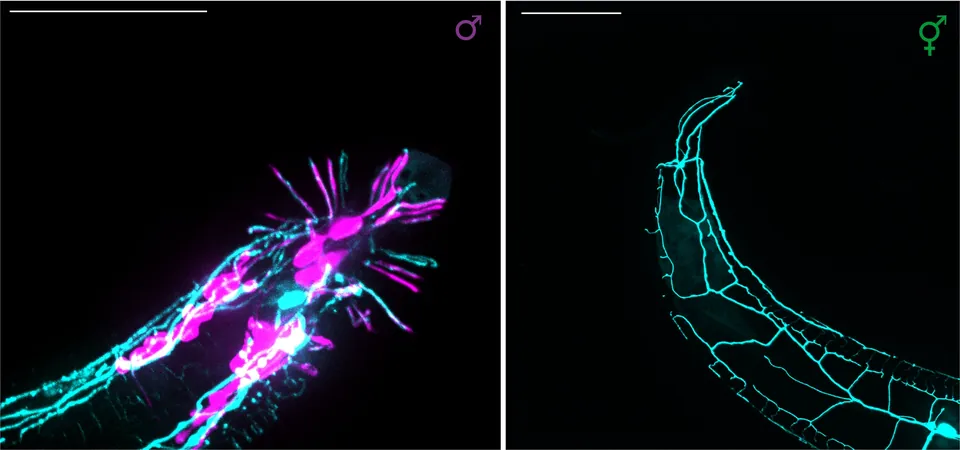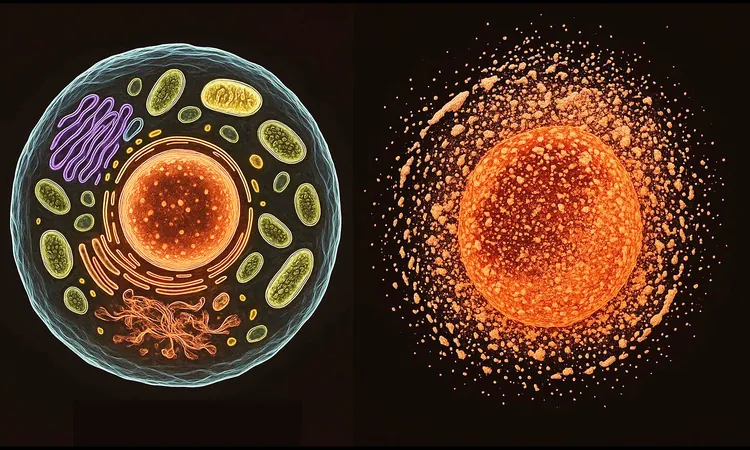
Unveiling the Secrets of Sex-Based Brain Differences: C. elegans Offers Insight
2025-05-13
Author: John Tan
Do Men and Women Really Think Differently?
Are there real differences in brain structure between men and women? And if so, does it even matter? Well, researchers delving into the tiny nematode worm, *Caenorhabditis elegans* (C. elegans), are uncovering surprising revelations that suggest yes, there are notable differences.
Meet the Research Star: C. elegans
This unassuming little worm is a superstar in scientific research, featuring a predetermined cellular identity for every one of its cells, including its 302 neurons. C. elegans comes in two varieties: the male and the hermaphrodite, a dual-sex worm that can self-fertilize. This unique biology makes it an ideal subject for studying sexual dimorphism—the differences between sexes.
The Innovative Study That Changed Everything
A groundbreaking study from the Technion-Israel Institute of Technology led by Dr. Yael Iosilevskii and Dr. Menachem Katz has just illuminated the ways that sex-specific neurons function differently. Published in the *Proceedings of the National Academy of Sciences*, the research revealed striking differences in the neuron known as PVD, crucial in pain sensing for hermaphrodites. In males, however, PVD morphs to play a pivotal role during mating.
PVD: More than Just a Pain Sensing Neuron
In males, the PVD neurons take on a unique branching structure that extends into the tail fan—an organ used specifically for mating. When PVD development is disrupted, males lose coordination and become sluggish, revealing how a single neuron can directly influence behavior.
Implications for Human Neurology
The ramifications of this discovery may extend beyond the lab. Previous studies show that men and women exhibit different vulnerabilities to neurological disorders—think depression for women and Parkinson's for men. Could these variances link back to the anatomical differences in individual neurons? Unfortunately, with around 75 billion neurons in the human brain, finding direct correlations poses a monumental challenge.
Unlocking the Mysteries of Neuronal Structure
What makes this research unique is C. elegans' simplicity, allowing scientists to trace neuron development and behavior in real time. Insights from this study pave the way for understanding how sexual differences at the single-cell level could influence behavior in larger, more complex organisms.
Shaping Future Research
The remarkable findings surrounding the PVD neuron set the stage for further explorations into how sexual dimorphism affects not just worms—but potentially humans as well. This fascinating window into the worm's brain could help scientists anatomize the biological ties between sex-specific behaviors and neurological health.




 Brasil (PT)
Brasil (PT)
 Canada (EN)
Canada (EN)
 Chile (ES)
Chile (ES)
 Česko (CS)
Česko (CS)
 대한민국 (KO)
대한민국 (KO)
 España (ES)
España (ES)
 France (FR)
France (FR)
 Hong Kong (EN)
Hong Kong (EN)
 Italia (IT)
Italia (IT)
 日本 (JA)
日本 (JA)
 Magyarország (HU)
Magyarország (HU)
 Norge (NO)
Norge (NO)
 Polska (PL)
Polska (PL)
 Schweiz (DE)
Schweiz (DE)
 Singapore (EN)
Singapore (EN)
 Sverige (SV)
Sverige (SV)
 Suomi (FI)
Suomi (FI)
 Türkiye (TR)
Türkiye (TR)
 الإمارات العربية المتحدة (AR)
الإمارات العربية المتحدة (AR)